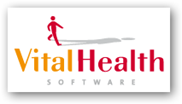We have one more EHR project acclaiming to build the best and easiest software system to use for clinicians. The Mayo Clinic currently uses VitalHealth software in house and several solutions. You can also follow this link to view an online demonstration on how the portal worked for diabetes.
house and several solutions. You can also follow this link to view an online demonstration on how the portal worked for diabetes.
I see so many different software variations and the creativity is good, but how many systems can one use or learn? I have always liked the Common User Interface myself which is free and open code software with Silverlight dynamics for charting that any software company can use and develop. There’s more at the link below and as we start entering into the area of “standards” for ease of use, I think programs of such nature will stand to play a more important role, after all, how many systems do you want and need to have clinicians learn? I had one doctor tell me he learned 5 different systems to get through his internship, in my opinion overkill with software and way overdone. The guy needs to be a doctor first. BD
Microsoft Common User Interface for Health Applications- Silverlight...and Windows Presentation Foundation
From the website: VitalHealth Software for Health 2.0
“VitalHealth Software, a joint venture between the Mayo Clinic (US) and the Noaber Foundation (NL), delivers web-based software solutions for health management. We focus on disease management, health network management and personal health management. We provide disease management solutions for Diabetes, COPD-Asthma, Cardio Vascular Risk Management, Schizophrenia, Multiple Sclerosis, Obesity and others. Our model-driven software platform - the VitalHealth Platform, is used by a growing network of partners to realize 4th and 5th generation EMR's”
VitalHealth Software (www.vitalhealthsoftware.com) has entered into collaboration with Mayo Clinic to develop a next-generation Electronic Medical Record (EMR) designed to support the workflow of primary care physicians.
Less than 20 percent of today’s small primary care practices in the U.S. use an EMR. Already burdened by keeping up with all aspects of running a medical practice, today’s primary care physicians often consider EMRs too cumbersome and time-consuming to use. The next-generation primary care record under development by Mayo Clinic and VitalHealth Software will create simplicity at the point of care while contributing to quality of care and patient satisfaction.
The technology platform is based on several years of development and systems implementation design within the primary care practices at Mayo Clinic Rochester. The new solution will support the workflow needs of today’s medical practices, including point-of-care decision support, population management and reporting. The system is designed to be significantly easier to use than today’s EMR solutions and minimizes data entry. Key features include:
* Support for the workflow of primary care practices
* Smart alerts and recommendations based on Mayo medical knowledge
* Disease management and population management
* Integrated patient portal
* Enabling Connected Medical Home
* Certified for Meaningful UseSlated for availability in late 2010, the solution will be delivered via the Software-as-a-Service (SaaS) model, providing anytime, anywhere access via a web browser while also minimizing set up, training, and system maintenance time.
VitalHealth Software to Develop Next-Generation Primary Care Record





0 comments :
Post a Comment